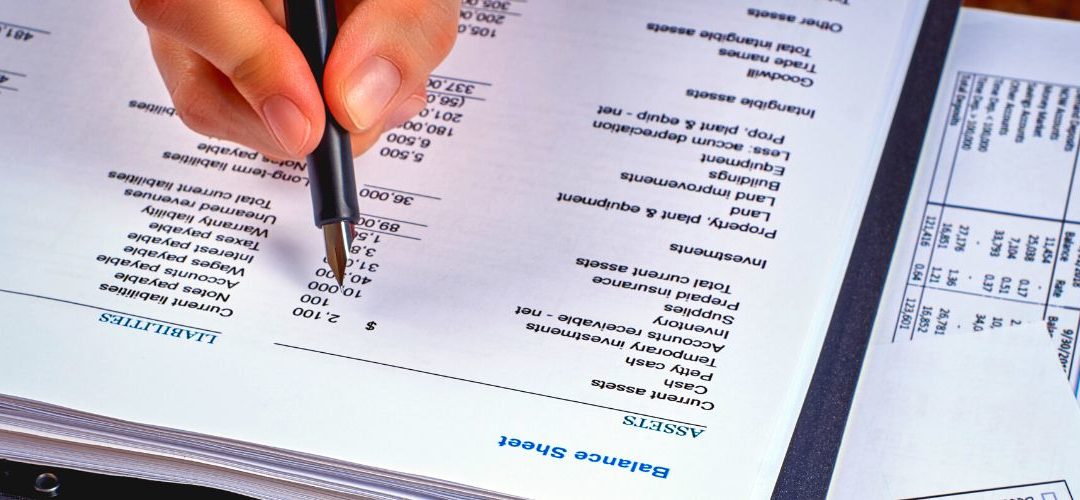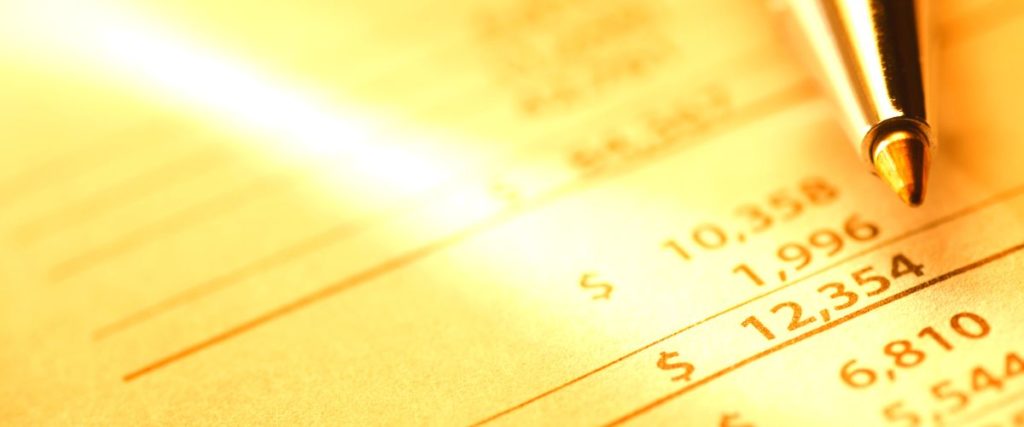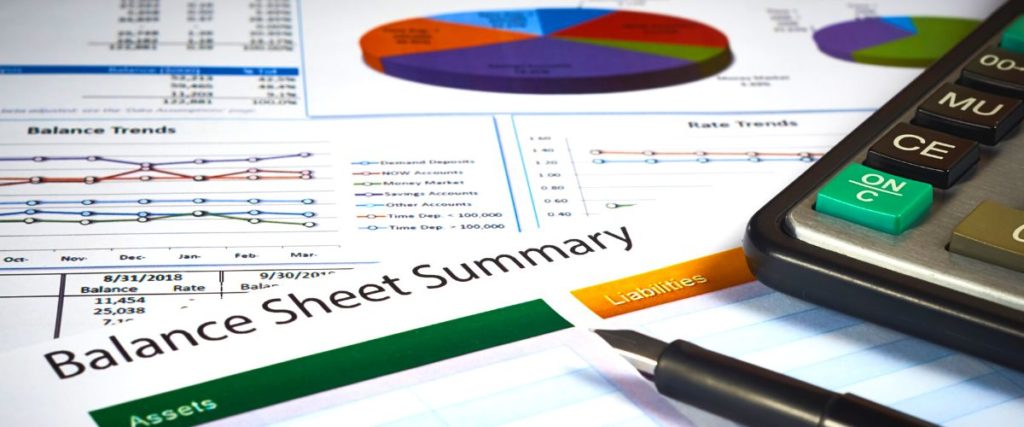When you own a company, you are responsible for keeping track of its finances. This process involves compiling and analyzing different financial statements on a regular basis. These documents provide insight into the health of your business and how profitable it is. The financial statements are essential when you want to know about the financial condition of any given company or business. A balance sheet is a snapshot of your company’s financial position at a particular point in time. It shows you if you have enough cash, assets, and other things of value to continue operating your business, and also indicates how much risk your company is taking with its current capital and asset balances. Keep reading to understand more about the balance sheet and its importance.
What is a Balance Sheet?
A balance sheet is a financial statement that reports an organization’s assets, liabilities, and equity at a specific point in time. It is a snapshot of a company’s financial position at a particular point in time. It is important to note that a balance sheet is different from a profit and loss (P&L) statement, which reports a company’s earnings over a period of time, such as a fiscal quarter or fiscal year.
Companies use a balance sheet to account for the value of the assets they own (what they own), the amount of debt they have (what they owe), and the amount of equity they have (what owners have invested). The balance sheet is one of three key financial statements reported by public companies in the United States.
Types of Balance Sheets
There are two types of balance sheets: the single-step and the double-step.
- The single-step balance sheet is a statement that presents an asset, liability, and equity account as a single figure for each item.
- The double-step balance sheet combines the asset and liability account into a single figure, then shows the single figure as a single figure for each item.
The Basics of the Balance Sheet
The balance sheet shows a company’s assets on one side and its liabilities and equity on the other side. A company’s assets are what it owns, including cash and anything else that has value (such as equipment, inventory, real estate, etc.) The liabilities side of the sheet shows what the company owes (for example, money owed to suppliers, employees, or other companies, etc.).
Equity is what owners have invested in the company plus any profits from historical periods. The total of these three items on each side of the sheet must be equal:
Assets = Liabilities + Equity
Assets on the Balance Sheet
The assets section of the balance sheet is where companies record what they own. These include cash, accounts receivable, inventory, real estate, and equipment. Cash is the most liquid asset and is what you have on hand to pay bills and fund daily operations.
Accounts receivable are amounts that customers owe the company for products or services. Inventories represent raw materials, work in progress, or finished goods that are ready to sell. Real estate is the land and buildings owned by the company. Equipment represents machinery, tools, and other items that have a useful life beyond one year.
Liabilities on the Balance Sheet
The liabilities section of the balance sheet is where a company records what it owes. Types of business liabilities can include accounts payable, short-term debt, and long-term debt. Accounts payable are amounts owed to suppliers and vendors. Short-term debt represents loans with maturities of less than 12 months. Long-term debt represents loans with maturities beyond 12 months.
There’s another kind of liability or asset you may have on your balance sheet, and that is contingent assets or liabilities. These items might be added to your balance sheet depending on the outcome of a set of factors. For example, if one of your vineyards you lease is growing grapes that are suddenly in high demand for white wine, you may be able to increase the rent on your lease, since the profit margin for the grapes is higher. This could be counted as an asset.
A contingent liability would be a lawsuit. For example, if your company is being sued for copyright infringement because you and another company disagree on a trademark, you may have to pay damages if you lose the lawsuit. These losses that haven’t happened yet can be counted as a contingent liability.
Equity on the Balance Sheet
Equity is what owners have invested in the company. This could be a start-up business that has raised venture capital, or an established company that has issued shares on a public stock exchange.
Financial Liquidity Versus Solvency
The two primary concerns of a company regarding liquidity are the ability to pay its expenses and the ability to meet its debt obligations. These two concerns are often closely intertwined because if a company cannot pay its operating expenses either because it is running out of cash or because it has spent all of its cash reserves, then it will not be able to meet debt obligations.
Liquidity refers to the ease with which a company can access funds. It is measured as the availability of cash and/or securities that can be converted into cash at some point in time. A company’s solvency is concerned with whether or not it has enough assets to cover all of its liabilities, including short-term liabilities like daily payroll. Solvency also includes long-term liabilities, such as pensions and long-term debt.
Solvency is a function of liquidity, or how much cash a company has on hand and what kind of assets it has available to cover debts. The two are related, but solvency is more about the financial health of a firm. Liquidity refers to whether or not a company can pay its debts at any given moment in time. If a company is short on cash, it may run into trouble paying creditors and may even have to declare bankruptcy if it cannot get more money quickly enough, while solvency means that the company will still be able to meet all its liabilities.
Keep Your Financial Statements Accurate
It is essential to always keep your financial records accurate by recording any changes to each statement when it occurs. When you make purchases or investments in assets, these will increase your assets on the balance sheet. For example, you purchase new equipment for your business, which will add a new asset of equipment to your balance sheet.
When you make payments for liabilities, this will decrease your liabilities on the balance sheet. For example, you pay off a supplier or vendor for services or products that have already been provided. You also pay off your rent for your business premises.
Determine Which Reporting Date Or Reporting Period Your Business Is In
The reporting date is based on the fiscal year. Fiscal year (FY) versus calendar year can be confusing, but it’s important to understand what both terms mean. A fiscal year is the period of time when a company’s financial statements are prepared. This can range from July 1 to June 30, with some companies starting their fiscal year on January 1 and ending on December 31. A calendar year is the 12-month period used in most countries, including the United States. In general, fiscal and calendar years differ in length but not in purpose, as they are both used for accounting purposes.
However, there are some cases where one will be used over the other: Individual investors sometimes prefer using a fiscal year because it is a more accurate representation of a company’s operations than a calendar year.
For example, it may be better to use FY2020 instead of FY2021, which could result in an undercount or overcount leading to an inaccurate overall picture of the business. On the other hand, companies often use calendar years for tax reporting purposes because this is what is required by law.
In addition, individual investors may prefer to use a calendar year for convenience, such as knowing that their holdings will be included in annual tax filings every April 15th rather than having to track them separately each quarter or month.
The Quarter System
Every balance sheet uses the quarter system. The business quarter system breaks down the year into four parts, with three months in each quarter. The first quarter (Q1) represents business in January, February and March. The second quarter (Q2) represents the business you do in April, May, and June. The third quarter (Q3) represents all of the commerce you have in July, August, and September. The fourth, or final quarter, represents your business in October, November, and December.
It is important to understand the shorthand for the quarter system, as so many documents rely on the abbreviation as a type of financial know how. For example, if you have a huge tax bill to pay in April, that would be a liability in Q2. If you have a huge sale of equipment in August, that would be an asset in Q3. These quarters allow you to read a balance sheet more effectively and help you understand your business moving forward.
Why Are Balance Sheets So Important?
Many small business owners wonder why they need a balance sheet of their business at all. You may have been working in your small business for years without ever needing a balance sheet at all. However, if you are looking to expand your business, create more demand, or even explore new business areas, it’s important to check your balances.
Think about a balance sheet as a health care report. You need to make sure you have checkups with your doctor to maintain your health. You need to know what’s going on with your health so you can make better decisions. It is the same with the health of your business. Not only is your balance sheet a snapshot of your business health, but it can also be a roadmap to better business decisions, which leads to a healthier bottom line.
The more you know about the health of your business, the better decisions you can make. Using the date on your balance sheets allows you to choose what to work on, where to cut expenses, and when you have the financial ability to grow. It can also give you insight as to whether or not your business is carrying too much debt, which may mean changing around how your business operates.
Protea Financial Can Help You Understand Your Balance Sheet
All businesses need a method of reporting their finances so they can see how profitable they are and how much they are worth. Financial statements, such as the balance sheet, help you track your assets and liabilities, as well as your equity. The balance sheet is a simple way to summarize your company’s financial situation. It shows what you own, what you owe, and what you’re worth. If you want help keeping your books straight, or help understanding your balance sheet, then contact Protea Financial today. We are here to help!
For help understanding your financial statements or understanding the importance of your balance sheet, call us here at Protea Financial. Our team of experienced financial experts are here to help!





